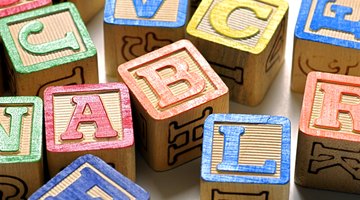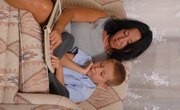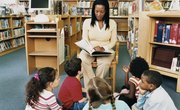First grade is the time when children often begin to perceive of themselves as "good" readers or "bad" readers. For some, this is a life-long perception. It is crucial for parents and teachers to work together toward the common goal of teaching children to read accurately, fluently and with comprehension. Explicit and systematic teaching of phonemic awareness, phonics, vocabulary, fluency skills and comprehension strategies will enable first graders to become active, confident readers.
Phonemic Awareness

Phonemes are the sounds that make up words. Phonemic awareness is the understanding that spoken words are made up of individual sounds that are blended together when the words are pronounced. First graders need to both hear and produce these sounds and then be able to manipulate the sounds into segments and words. Students should also be able to distinguish between words that sound similar or dissimilar, recognizing that sounds are put together to form an infinite number of words.
Phonics

Phonics is a method based on the alphabetic principle, meaning that each letter of the alphabet represents a particular sound. First graders are usually taught the sound of each letter in a systematic and sequential manner. Students are then taught how to blend the sounds together to make and read words. Phonics instruction includes repetition and activities that reinforce letters and sounds that have been taught so that students learn to read and spell words accurately and with speed.
Fluency

Fluency is the ability to recognize words rapidly and accurately and then to group the words into meaningful phrases to enhance understanding of the text. A first-grader who can read fluently will read words "automatically" and with expression so that what is being read sounds more like spoken language. Students who struggle with decoding will read slowly and will tend to lose the meaning of the text by the time they reach the end of the sentence or passage because of the effort spent on figuring out each individual word.
Vocabulary

First graders must have vocabulary -- words -- to communicate with others. The four types of vocabulary are listening, speaking, reading and writing. Listening vocabulary are words the child will understand when someone speaks to him or her. Speaking vocabulary refers to the words a child uses when speaking to someone else. A reading vocabulary involves words that the child knows when he sees them in print or words that he can decode. Writing vocabulary are the words a first grader uses when he writes. Vocabulary acquisition is important for word recognition and reading comprehension.
Comprehension

To comprehend a text, first graders use thinking skills to connect what they read to what they already know. Phonemic awareness, phonics, fluency and vocabulary are the prerequisites and the building blocks of comprehension, which is the ultimate goal of reading instruction. First graders who are good "comprehenders" have learned to use various thinking strategies such as visualizing or illustrating what they are reading, asking questions about what they are reading and summarizing what they have read.
Related Articles
References
Writer Bio
Amy Rognlie has been writing since 1994. A licensed elementary and middle school teacher, she divides her time between teaching and writing. Rognlie's work has been published by Barbour Books, "Women's Edition Magazine," Christianity Today Online, "Memory Maker's Magazine," and many other publishers. Rognlie has a secret aspiration to write the next blockbuster cozy mystery series.











